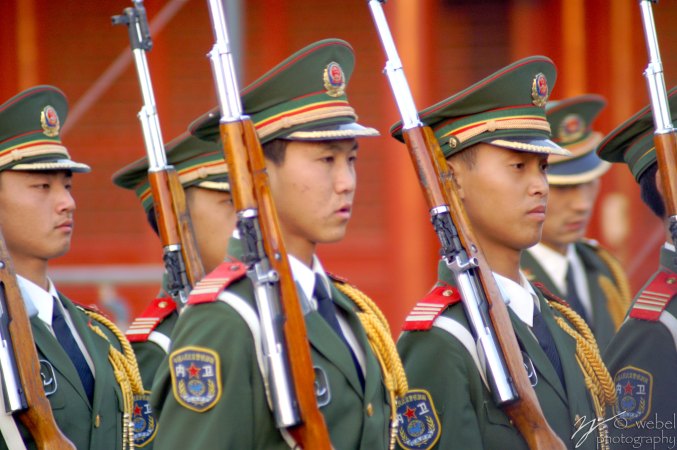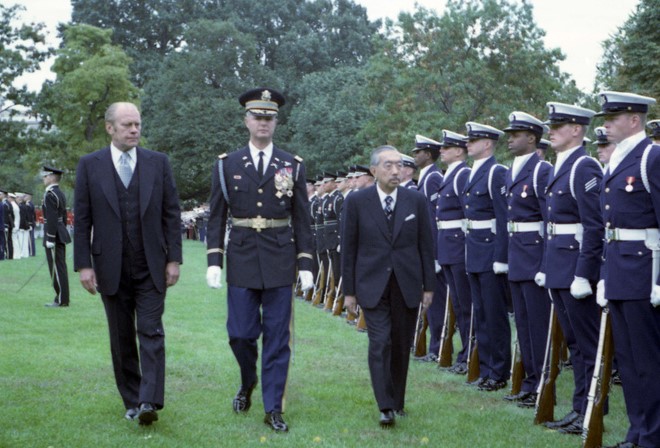
The last American to die in World War II was killed three days after the war was over.
After Japan surrendered on Aug. 15, 1945 — what would be called V-J Day (“Victory over Japan”) — the war in the Pacific ended just like it had started in 1941: with “a surprise attack by Japanese war planes,” wrote Stephen Harding in Air Space Magazine.
With just one other bomber alongside and no fighter escort, Army photographer Sgt. Anthony Marchione was flying in an Army Air Force B-32 Dominator bomber aircraft on Aug. 18 with a mission to take reconnaissance photos and ensure Japan was following the cease fire.

But some in the Japanese military had other plans that day. The two B-32’s were shot at by anti-aircraft and enemy aircraft fire soon after they got over Tokyo, and three airmen were wounded, including Marchione.
Japanese Emperor Hirohito had announced over the radio that his country had surrendered, but there were a number of military diehards who vowed to fight on until a formal document was signed (Japan’s formal surrender was not signed until Sep. 2).
“When I got there, Tony was bleeding from a big hole in his chest,” 2nd Lt. Kurt Rupke told Air Space Magazine’s Stephen Harding in 1997 (other eyewitnesses said Marchione was hit in the groin). “He was still conscious when I got to him, and I told him everything was going to be all right. He said ‘Stay with me,’ and I said ‘Yes, I’ll stay with you.’ I did the best I could to stop the bleeding and I held him in my arms.”
From Robert F. Dorr writing for the Defense Media Network:
According to government microfilm records, when the two B-32s reached Tokyo, anti-aircraft batteries opened fire on them. With flak bursts exploding at what appeared to be a safe distance, the bombers then came under attack from what the American side identified as Nakajima Ki-44 army fighters, known to the Americans as “Tojos” and by Mitsubishi A6M5 Zero naval fighters, dubbed “Zekes” in U.S. parlance. In fact, the Tojos were probably Kawanishi N1K2 Shiden, or “George,” fighters.
According to Dorr, another soldier with Marchione remembered hearing unusual radio transmissions when the pilot of the damaged B-32 asked the other to slow down so it could keep up. One of the Japanese pilots said over the radio in English, “Yes, please slow down so I can shoot you down, too.”

The voice may have belonged to Lt. Saburo Sakai — an English-speaking Japanese ace who confirmed he participated in the engagement — though there is some dispute over whether he fired his guns that day, Defense Media Network reported. But he seemed to take credit for the B-32 shooting and rationalize it in this quote, captured in the book “Imperial Japanese Navy Aces 1937-45” by Henry Sakaida:
“What we did was perfectly legal and acceptable under international law and the rules of engagement. While Japan did agree to the surrender, we were still a sovereign nation, and every nation has the right to protect itself. When the Americans sent over their B-32s, we did not know of their intentions,” Sakai said. “By invading our airspace they were committing a provocative and aggressive act … It was most unwise for the Americans to send over their bombers only a few days after the surrender announcement. They should have waited and let things cool down.”
Regardless of who fired the shots, there is no dispute over what happened before the B-32 landed safely back in Okinawa. Nineteen-year-old Sgt. Anthony Marchione succumbed to his wounds, the last of more than 407,000 Americans to die in World War II.
He is buried in Pottstown, Pennsylvania.










